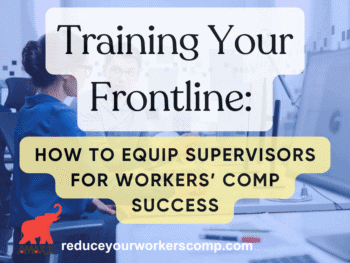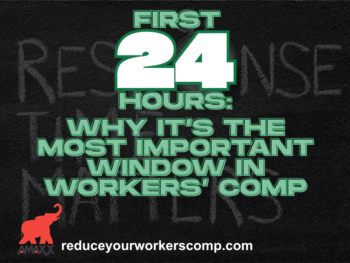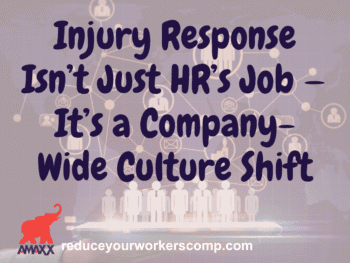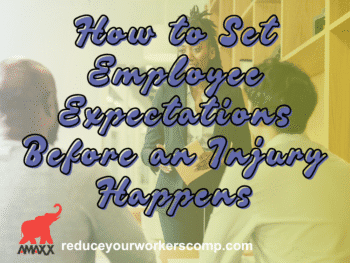Non-English-Speaking Hispanic Workers Present Unique Safety Challenges
Picture this: It’s your first day on the job with a construction crew. Your boss asks you to help lay a foundation for an office building. High above, another worker is walking along a scaffold. He accidentally kicks a hammer off the scaffold, and you’re directly below it.
Fortunately, your company embraces a “total safety” culture. In a “total safety” culture, employees look out for one other. Everyone is accountable for not only their own safety but also their co-workers’ safety.
With that in mind, someone yells, “¡Cuidado, el martillo se puede cáer sobre ti!” Your co-worker warned you to get out of the way. If you didn’t understand Spanish, you might have been involved in a serious accident.
In 2006, Hispanic workers died at a rate that was 25% higher than all other workers in the United States, according to a study published last year in Morbidity & Mortality Weekly Report. As of 2006, nearly 20 million workers in this country were Hispanic, making them one of the fastest-growing segments of the U.S. workforce.
Here are some tips for keeping non-English-speaking Hispanic workers safe. Follow the ones that fit your business, and you can help make your workplace safer and more productive.
Challenge: Language
Language can be a barrier to communication, even among people who speak the same language. Imagine how hard it is for Hispanic workers who speak little or no English.
- Use more picturesand fewer words to point out hazards and teach safety procedures.
- Most communicationis nonverbal. Watch workers’ eyes, body language and expressions to see whether they understand instructions.
- Train supervisorsin basic, conversational Spanish. Send non-English-speaking Hispanic workers to a conversational English class. Focus on commonly used words in your industry.
- Hire Spanish-speakingsupervisors who have experience in your industry.
- Ask bilingual employeesto translate safety messages.
- If you have trainingrequirements, the Occupational Safety and Health Administration mandates that you provide them in a language that workers can understand. Hire a translation company to put safety training material into Spanish. Make sure the translator is fluent in the Spanish dialects spoken by your employees.
Challenge: Literacy
Many Hispanic workers do not have the luxury of pursuing their education because they have to help support their families. About 40 percent of Hispanics age 25 and up do not have a high school diploma, according to the U.S. Census Bureau. By comparison, about 14 percent of the total U.S. population does not have a high school diploma.
Solutions
- Keeptraining basic.
- Providesimple, hands-on safety demonstrations.
- Do notlet employees start work until they show that they understand the training.
- Providefollow-up training, and be sure to address new workplace hazards.
Challenge: Fear
Have you ever been afraid of asking a question in front of a large group of people? Imagine asking it in a different language. Non-English-speaking Hispanic workers may put themselves at risk because they’re too embarrassed to ask questions about safety procedures. Some may even fear for their jobs if they report unsafe working conditions.
Solutions
- Encourageevery employee to report unsafe conditions.
- Offersafety training away from the workplace. If the trainer is someone other than a manager, employees may be less intimidated and more likely to ask questions.
- Make surenon-English-speaking Hispanic workers have peers they feel comfortable talking to.
- Deliverthe safety message to employees in their environment. For example, distribute Spanish-language safety training material at community functions.
- Rewardsafe behavior in front of co-workers.
- Take timeto learn about your Hispanic workers and their culture.
Author: Joey Lucia is a loss prevention supervisor at Austin-based Texas Mutual Insurance Company http://www.texasmutual.com the largest provider of workers’ compensation insurance in Texas. (800) 859-5995. Email: information@texasmutual.com
WC Calculator: www.reduceyourworkerscomp.com/calculator.php
TD Calculator:www.ReduceYourWorkersComp.com/transitional-duty-cost-calculator.php
WC 101: www.ReduceYourWorkersComp.com/workers_comp.php
All state laws vary. Do not use this information without independent verification.
©2008 Amaxx Risk Solutions, Inc. All rights reserved under International Copyright Law. If you would like permission to reprint this material, contact Info@WorkersCompKit.com
















